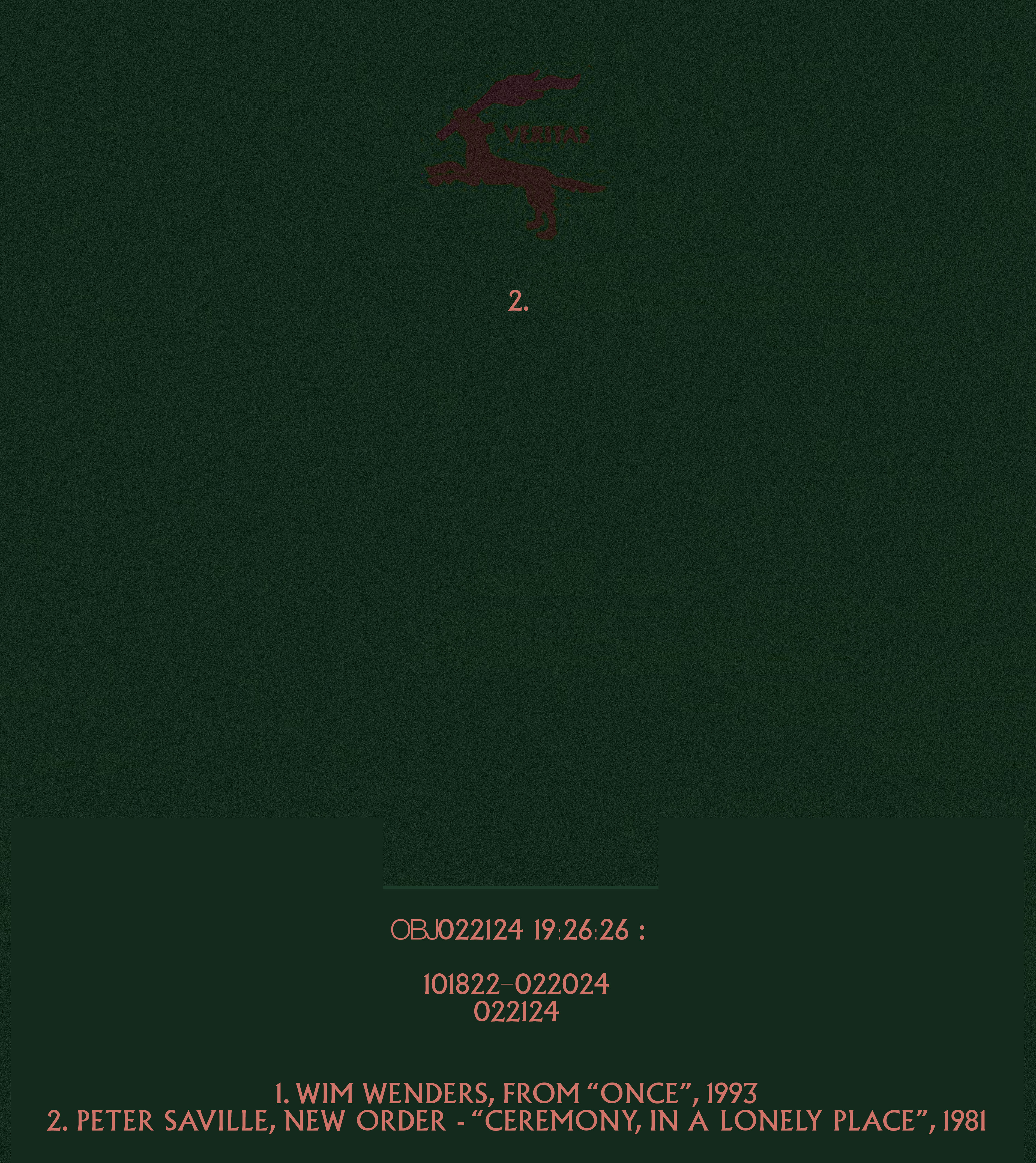OBJ031224
2024
2024
“untitled”
JOYCE:RE:
adidas sambas
adidas sombers
Mixed media,
Graphite on paper, 8.5”x11” + Digital collage and type,
600dpi
JOYCE:RE:
adidas sambas
adidas sombers
Mixed media,
Graphite on paper, 8.5”x11” + Digital collage and type,
600dpi
Category:
SELF
SELF




OBJ021024
2024
2024
“listen”
In Dialogue :
Wim Wenders, “Once”
1993
Peter Saville, New Order, “Ceremony, In A Lonely Place”
1981
JOYCE:RE:
the songs that speak to you
Mixed media,
Graphite on paper, 8.5”x11” + Digital collage and type,
600dpi
In Dialogue :
Wim Wenders, “Once”
1993
Peter Saville, New Order, “Ceremony, In A Lonely Place”
1981
JOYCE:RE:
the songs that speak to you
Mixed media,
Graphite on paper, 8.5”x11” + Digital collage and type,
600dpi
Category:
SELF
SELF





OBJ021024
2024
2024
“GO!”
In Dialogue :
Hideo Kojima, “Metal Gear Solid V: The Phantom Pain”
2015
Hans Bellmer, “untitled”
1946
JOYCE:RE:
a whisper.
crude oil, impurity, completion, enlightenment
mitosis. foundation. error.
crusades. endless
Mixed media,
Graphite on paper, 8.5”x11” + Digital collage and type,
600dpi
In Dialogue :
Hideo Kojima, “Metal Gear Solid V: The Phantom Pain”
2015
Hans Bellmer, “untitled”
1946
JOYCE:RE:
a whisper.
crude oil, impurity, completion, enlightenment
mitosis. foundation. error.
crusades. endless
Mixed media,
Graphite on paper, 8.5”x11” + Digital collage and type,
600dpi
Category:
SELF
SELF





OBJ010224
2024
2024
“wings”
In Dialogue :
Arthur C. Clarke, “One day, a computer will fit on a desk”
1974
JOYCE:RE:
where are my wings?
the serfs killed their lords.
Mixed media,
Graphite on paper, 8.5”x11” cut and taped together, Irregular dimension + Digital collage and type,
600dpi
In Dialogue :
Arthur C. Clarke, “One day, a computer will fit on a desk”
1974
JOYCE:RE:
where are my wings?
the serfs killed their lords.
Mixed media,
Graphite on paper, 8.5”x11” cut and taped together, Irregular dimension + Digital collage and type,
600dpi
Category:
SELF
SELF




OBJ121223
2023
2023
“ a longing, a tether, a hitch. An island, a boat, the voyage, a bridge”
In Dialogue :
Arseny Tarkovsky, “And this I dreamt, and this I Dream”
Ryuichi Sakamoto, “A-Sync”
Mixed media,
Graphite on paper, 8.5”x11” cut and taped together, Irregular dimension + Digital collage and type,
600dpi
In Dialogue :
Arseny Tarkovsky, “And this I dreamt, and this I Dream”
Ryuichi Sakamoto, “A-Sync”
Mixed media,
Graphite on paper, 8.5”x11” cut and taped together, Irregular dimension + Digital collage and type,
600dpi
Category:
SELF
SELF




